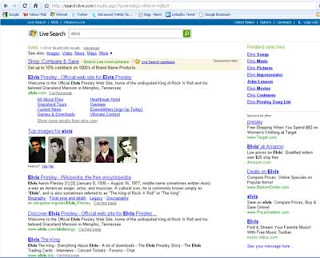While there, please consider subscribing to the RSS feed. The link is at the top, left of the home page.
Thank you!
I present ideas and tips to help corporate Marketing and IT Departments work better, together and separately, in SEO, and Web, Search and Social Marketing.
 Video is a great way to tell a story. The combination of visual and audio elements can have a great effect on the viewer. I believe the more entertaining the video is, the more impact it will have and the more it will be remembered. Videos can be very effective, even if you’re reaching out to a niche market. A great example of using video to reach out is “Wilsonart Flooring and Charlie the Cheapskate” by Spike and Dave.
Video is a great way to tell a story. The combination of visual and audio elements can have a great effect on the viewer. I believe the more entertaining the video is, the more impact it will have and the more it will be remembered. Videos can be very effective, even if you’re reaching out to a niche market. A great example of using video to reach out is “Wilsonart Flooring and Charlie the Cheapskate” by Spike and Dave. Many people glaze over when the subject of passwords comes up. I think it's because us IT folks tend to make things seem a lot more complicated than need be. Here are 4 easy steps to help you create better passwords to protect your personal information:
Many people glaze over when the subject of passwords comes up. I think it's because us IT folks tend to make things seem a lot more complicated than need be. Here are 4 easy steps to help you create better passwords to protect your personal information: Sometimes, IT people will mention "Change Management" when discussing deadlines and schedules relating to the IT part of web site deployment. To some, this can conjure up visions of "Mordac the Preventer of Information Services" from the Dilbert comics. It's really not like that.
Sometimes, IT people will mention "Change Management" when discussing deadlines and schedules relating to the IT part of web site deployment. To some, this can conjure up visions of "Mordac the Preventer of Information Services" from the Dilbert comics. It's really not like that.

 It's no secret that times are tough in today's corporate environments. It's more important than ever to demonstrate your worth to your employer to help keep you off the block if any cuts are made. One way to do this very well is by doing something we all should have learned in kindergarten: Play well with others.
It's no secret that times are tough in today's corporate environments. It's more important than ever to demonstrate your worth to your employer to help keep you off the block if any cuts are made. One way to do this very well is by doing something we all should have learned in kindergarten: Play well with others. 


 I've heard it, seen it, felt it. Have you? At search marketing events around the world when corporate marketing and IT folks talk about their web efforts, you can't help but know it's there. It's tension so thick. It comes from the struggle between marketing and IT departments over control of the corporate web site.
I've heard it, seen it, felt it. Have you? At search marketing events around the world when corporate marketing and IT folks talk about their web efforts, you can't help but know it's there. It's tension so thick. It comes from the struggle between marketing and IT departments over control of the corporate web site.